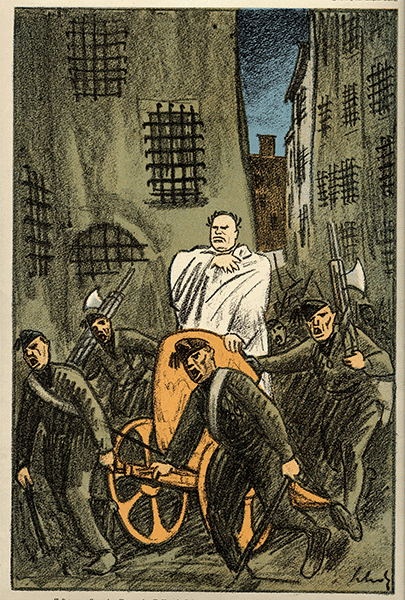Mussolini and the establishment of fascist dictatorship in Italy, 1918-29
3.6 Mussolini: The man and the image

Many historians have argued that Mussolini’s regime should be seen as very much a personal dictatorship rather than a fascist one, given his decisive role in the transformation of fascism from a grassroots movement to an elite-backed governing party. Throughout the course of the 1920s that personal focus became ever more evident, epitomised by his new self-appointed title, ‘Il Duce’. It was also marked by an attempt to promote a cult of Mussolini, which portrayed him as Italy’s saviour. This was centred on a vision of Mussolini as a unique and charismatic figure, blessed with superior skills, both cultural and political.
At the heart of this campaign was the medium of film, as Mussolini early recognised the potential of this format as a political tool. As a result the Italian public was bombarded with images of their leader on a level unmatched by any other contemporary state. These ranged from a recreation of the March on Rome which idealised fascist efforts to more personalised images of Mussolini in heroic stance, from wrestling lion cubs to helping with the harvest. Whether the Italian public was taken in by this propaganda is highly debatable, and it could be argued that the sheer blatancy of the attempt did much to undermine it. However, in developing the use of media in this way, and in placing so much emphasis on the man behind the message, Mussolini undoubtedly helped create a template for modern dictatorship.
Individual activity: The role of Mussolini
Look at the following biographies of Mussolini:
- ‘Benito Mussolini (1883–1945)’ on the BBC History website.
- Mussolini, Benito, from A Dictionary of Political Biography (2 ed.), Edited by Dennis Kavanagh and Christopher Riches.
- ‘Benito Mussolini’ in the Holocaust Encyclopedia on the United States Holocaust Memorial Museum website.
Now consider the following questions and make notes for your own records.
- What perspective on Mussolini does each biography offer?
- To what extent do the accounts differ in their perspectives?
- How do these biographies contribute to our understanding of Mussolini’s rise and role?
Group activity: The power of image
Look at these sources which focus on Mussolini’s image. Select at least two and consider these questions.
- How is Mussolini portrayed in these sources and with what intended message?
- How persuasive are these propaganda techniques in your view?
- How do the sources add to our understanding of Mussolini’s leadership style?
From Pathé News, the following short film clips:
Italy’s Strong Man, 1924 (follow link for more information and visual description)
With Mussolini in Tripoli, 1926 (follow link for more information and visual description)
Mussolini – the Human Side, 1927 (follow link for more information and visual description)
Italy’s dictator leaves care of states behind to spend a few hours at schoolchildren’s seaside camp.
Signor Mussolini at Striking Demonstration of Italy’s Air Power, 1927 (follow link for more information and visual description)
Signor Mussolini, 1928 Mussolini has rapturous reception as he reviews Fascist Army on 6th anniversary of historic March on Rome. (follow link for more information and visual description)
Fascist Army of the Future, 1928 (follow link for more information and visual description)
The Balilla reviewed by Signor Mussolini on their fifth anniversary.
Italy‘s Two Great Men, 1929 (follow link for more information and visual description)
Signor Mussolini visits Gabriele D’Annunzio, the great poet, at his beautiful Villa on Lake Garda.
Now go to the Mussolini forum and share your views with your fellow students.